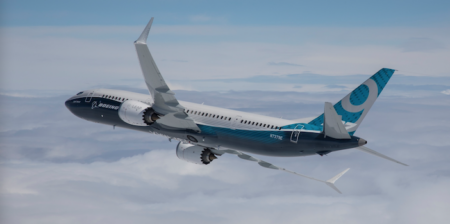2016 was another very good year for the aerospace industry. At the Farnborough Airshow alone we saw US$123.9 billion of deals recorded. The global aerospace & defense (A&D) market continues to enjoy huge revenue momentum, with historically high backlogs for Tier 1 suppliers, and all segments of the industry have to try to keep up with this demand. The interiors market is predicted to expand at a CAGR of 3.2% between 2016 and 2026.
Airbus and Boeing are now at the point where they are no longer competing in the same way. There are now too many orders for both combined, and the new battleground in 2017 will be fought in their factories, as they race to see who can increase production rates to match their commitments. To tackle this, Boeing and Airbus have targeted 25-30% increases in production.
In the first of this two-part series, I want to explore the significant challenges that companies in the interiors segment and their supply chains face in keeping pace with this demand, and the innovations we are seeing that can support progress here.
Getting the production line up to speed but for how long?
When it comes to the manufacturing supply chain, production ramp-up is the number one priority, and it will continue to be for OEMs and Tier 1 suppliers throughout the year. Much of this demand is being driven out of Asia, especially China and India, and this is set to continue for at least the next 18-24 months, when production rates are likely to stabilize.
With this in mind, OEMs and Tier 1 suppliers are focusing on harnessing efficiencies through operational readiness, supplier management/quality and zero defect production. However, this sprint for increased production needs to be complemented with a longer-term view, in the knowledge that the abundance of orders is not an indefinite state of affairs.
The supply chain is also under pressure to make these efficiencies while also finding ways to reduce costs. By focusing on optimizing production processes, the supply chain can achieve both, particularly when drawing on the benefits of automation as they become more established. As OEMs look to try to capture a greater percentage of the profits in the production line we will also see more risk sharing partnerships, giving the supply chain further incentive to deliver under these difficult conditions.
Printing at a sprint – the technology transforming aerospace manufacturing
The words on the supply chain’s lips are ‘production rate, production rate, production rate’. But increasing the volume without compromising the quality is the biggest challenge, and this played out in dramatic fashion last year in the interiors market, with a default by a major OEM. Interiors suppliers are now turning to the latest technologies to help them tackle this scale-up problem.
One of the most impactful technological advances is additive manufacturing. The precision that it allows, particularly with intricate components, means that OEMs can manufacture lighter and more accurate products faster than ever before. Equally, the manufacturing process here is far more streamlined, reducing human error, and allows rapid prototyping to stress test new innovations or design concepts, before going into mass production.
The interiors segment is still evolving its strategy when it comes to incorporating additive manufacturing into operations. But all the signs are there for this technological innovation to create the biggest impact on this industry over the next 5-10 years. I don’t think you can overstate the potential positive disruption here, as additive manufacturing could fundamentally change how every OEM operates. The supply chain is set to move into a transformative period in 2017.
Anand Parameswaran heads the aerospace and defense business unit at Cyient. In this role, he is responsible for driving superior outcomes for clients by leveraging Cyient’s capability across product design, manufacturing and aftermarket solutions. In his previous role he was the global head of human resources and business excellence.
Before Cyient, Parameswaran worked in various information technology (IT) industry leadership roles in North America, Europe, and Asia, including positions at Wipro and Cognizant, two leading global IT consulting firms. Parameswaran received a degree from Birla Institute of Technology and Science (BITS), Pilani, India.





